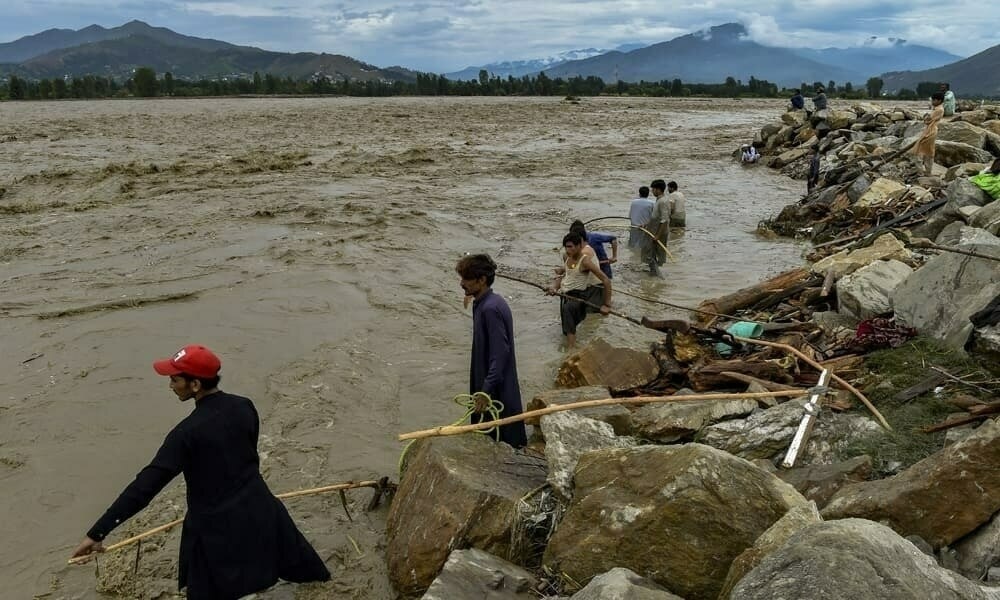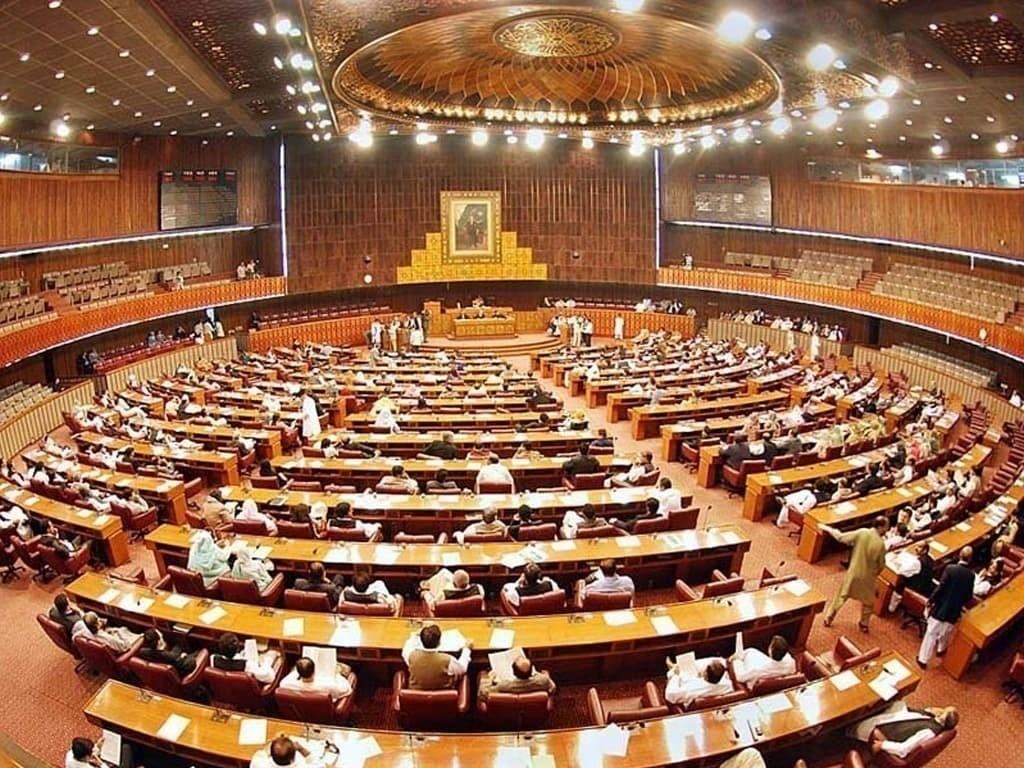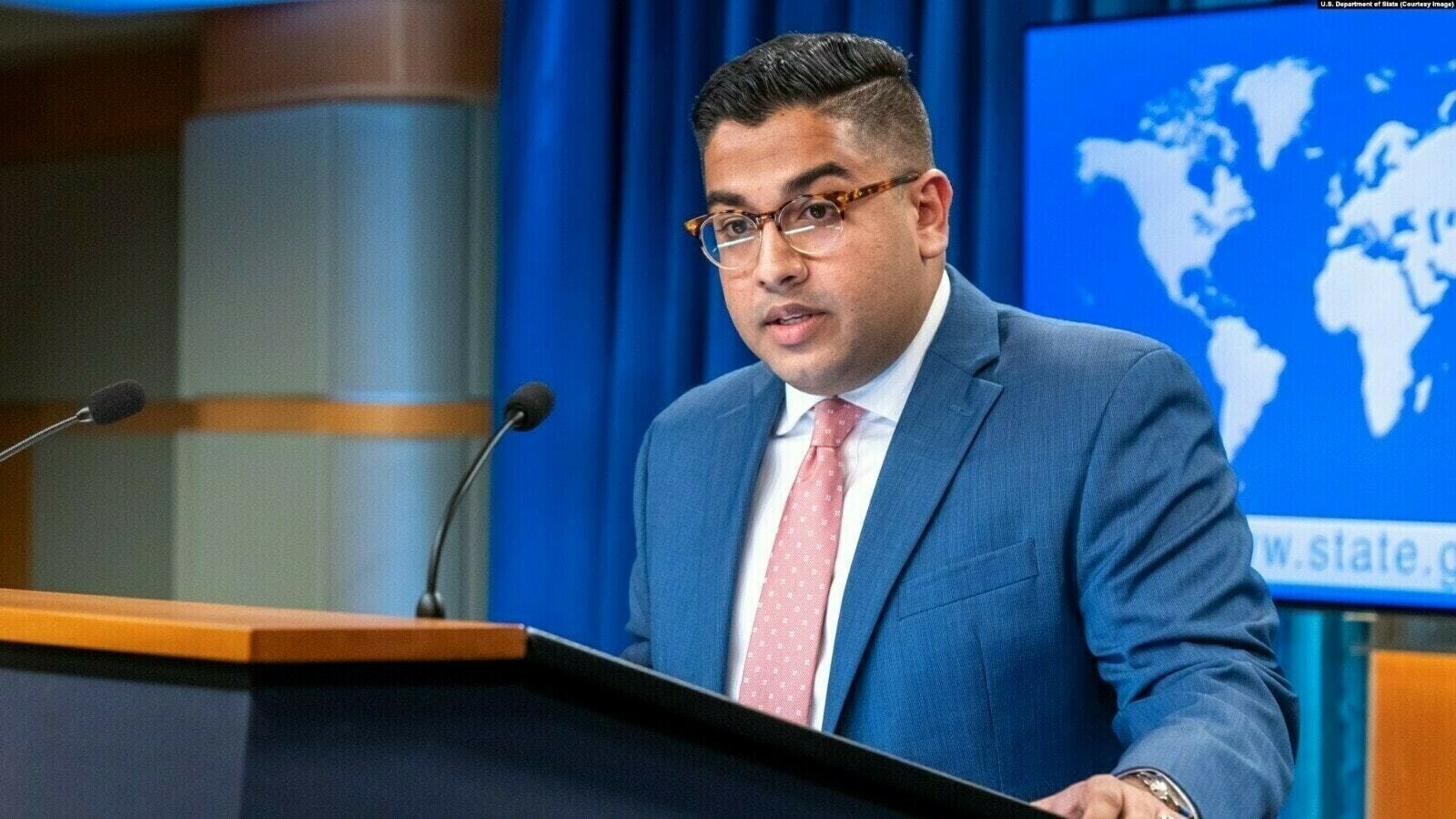PTBP Web Desk
Khyber Pakhtunkhwa (KP) has been hit by one of the deadliest monsoon spells in recent years, with the Provincial Disaster Management Authority (PDMA) confirming 313 deaths and 156 injuries in rain-related incidents. Torrential downpours have triggered landslides, collapsed roads, and caused rivers to overflow, sweeping away entire villages, bridges, and homes.
The PDMA report, released on Sunday, revealed that among the deceased were 263 men, 29 women, and 21 children, while the injured included 123 men, 23 women, and 10 children. Additionally, more than 159 houses were damaged, with 97 partially damaged and 62 completely destroyed.
However, local sources and independent reports claim the death toll is even higher, reaching 332 fatalities, prompting the KP government to impose a state of emergency until August 31.
The district of Buner has been the worst affected, with officials and residents reporting that the death toll has exceeded 250. According to AFP, at least 208 deaths were officially recorded in Buner, where entire villages were swept away. Officials confirmed that between 10 to 12 villages were partially buried under mud and debris.
Rescue workers have been digging through collapsed houses and massive boulders in search of survivors. More than 150 people are still missing, raising fears that the toll may rise further.
One grave digger, Qaiser Ali Shah, shared his painful experience, saying he had dug 29 graves in just two days, including six for children. “With each grave, it felt as though I was digging for my own child,” he said, overwhelmed with grief.
Apart from Buner, several other districts of KP have faced widespread destruction, including Swat, Bajaur, Shangla, Mansehra, Battagram, and Torghar.
- In Battagram, at least 11 bodies were recovered from flood-hit areas.
- In Shangla, dozens remain missing as heavy rains triggered landslides.
- In Swat, homes and shops were buried under mudslides, forcing residents to evacuate.
The floods have also caused power outages and communication breakdowns. According to PDMA chief Asfandyar Khattak, Buner has no electricity or mobile signals due to damaged power lines and mobile towers, hampering rescue efforts.
Khyber Pakhtunkhwa Chief Minister Ali Amin Gandapur visited Buner on Sunday to oversee rescue and relief operations. He announced the release of relief funds for affected districts and directed all government departments to expedite their operations.
The provincial government has declared a day of mourning across KP and officially categorized Buner, Bajaur, Shangla, Mansehra, Swat, and Battagram as disaster-hit districts.
At the federal level, Prime Minister Shehbaz Sharif instructed the National Disaster Management Authority (NDMA) to coordinate closely with PDMA and mobilize all resources for relief efforts.
The 911 emergency helpline has also been activated nationwide to provide instant support to citizens in disaster-hit areas, even in regions where mobile networks are inactive. The Local Government Department of KP has set up a special control room at the Directorate General to monitor the situation around the clock.
The Pakistan Meteorological Department (Met Office) has warned that heavy rains will continue until August 21, with the next spell forecast between August 17 and 19. The NDMA further cautioned that torrential downpours could affect multiple districts including Chitral, Dir, Haripur, Kohat, Kohistan, Karak, Kurram, Mohmand, Nowshera, Malakand, Abbottabad, Peshawar, Swabi, Bannu, Waziristan, and surrounding areas.
Rainfall is also expected in Gilgit-Baltistan and Azad Kashmir, particularly in Skardu, Hunza, Shigar, Neelum Valley, Bagh, and Muzaffarabad.
NDMA Chairman Lt. Gen. Inam Haider noted that the intensity of this year’s monsoon is 50–60% stronger compared to last year. He warned that two to three more monsoon spells are expected until early September.
In Buner, AFP journalists reported seeing half-buried vehicles, mud-filled shops, and entire communities destroyed. Local shopkeeper Noor Muhammad said, “Our belongings are scattered, ruined, and destroyed. Even the little money people had has been washed away.”
Residents described how they were trapped in their homes as floodwaters cut off main roads. “Our community has lost everything. Even our only road was washed away,” said resident Syed Wahab Bacha.
On Saturday, hundreds of villagers gathered for mass funerals, laying bodies wrapped in white shawls on open grounds. A schoolteacher from Buner, Saifullah Khan, said he helped retrieve the bodies of his own students. “I keep wondering what kind of trial nature has imposed on these kids,” he added.
Pakistan has faced multiple devastating floods in recent years, with the 2022 monsoon floods killing nearly 1,700 people and submerging a third of the country. Experts warn that climate change is intensifying extreme weather events, leaving Pakistan increasingly vulnerable to floods, droughts, and heatwaves.
This year’s floods have already claimed over 650 lives nationwide, with more than 920 injured. The disaster highlights the urgent need for stronger disaster preparedness and climate resilience policies.




